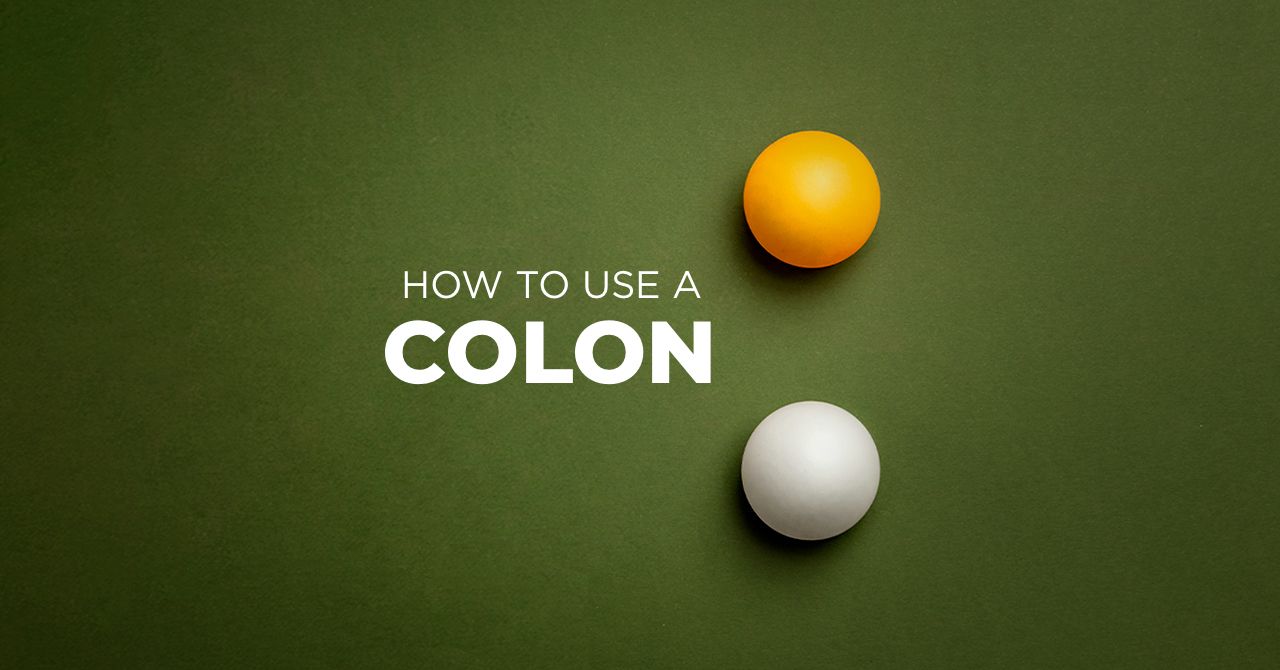
The correct use of a colon in a sentence
A colon is a punctuation mark writers use to introduce a list of things or amplify a clause that precedes its use.
What is a colon?
A colon is a punctuation mark writers use to introduce a list of things or amplify a clause that precedes its use. The most similar punctuation mark to a colon is a semi-colon. While the semi-colon connects two independent clauses, the colon introduces further information about a clause it supersedes using another clause.
Rules on how to use a colon in a sentence
Knowing when to use a colon does not have to be a challenge. Below are a few rules to use:
Rule 1: Introducing items/lists
Using a colon to introduce items and the list is the most popular form of colon usage in many write-ups. However, only a few people still know how to effectively use the punctuation mark as most people often confuse colons use with semi-colons.
Here are the rules you should consider when introducing a list/item when using the colon.
Sub-rule 1: Use it after a complete sentence/independent clause
Only use this rule if the item/list comes after a complete sentence/independent clause.
For example, it should be
“There are three things every baby needs: Food, attention, and care.”
not
“There are three things every baby needs; Food, attention, and care.”
Sub-rule 1: Capitalizing the first word after colons
Only consider capitalizing the first word after the colon if it is a proper noun. Using the previous example, “There are three things every baby needs: Food, attention and care” is the correct option, not “There are three things every baby needs; food, attention, and care.” This is because Food is a proper noun.
Sub-rule 3: Colon usage after a verb/preposition
Don’t use a colon after a verb or preposition.
For example, it should be
“Tiara needs books and pencils.”
not
“Tiara need: books and pencils.”
Rule 2: Connecting two sentences
Most confuse colon usage with semi-colon usage in this aspect. You should only use a colon if the sentence after the colon provides information about the first sentence. Also, the second sentence should start with a lower case.
For example, it should be
“We have a nice time in Niagara fall: the way the water fell was a sight to behold.”
not
“We have a nice time in Niagara fall; The way the water fell was a sight to behold.”
Rule 3: Introducing a bulleted/number list
When working with a bulleted or numbered list, use the colon before introducing the list. You can capitalize each element in the list if you like.
For example:
Africa is a rich continent. She contains different mineral resources:
- Gold
- Silver
- Diamond
- Coal
- Crude Oil
Rule 4: After a greeting/salutation
Colon usage after a greeting is another rule most people don’t know about the punctuation mark. This is especially important in formal letter writing.
After a greeting or salutation in a formal letter, use a colon. You can also use a colon for informal letters, although a comma is also suitable.
For example, the correct use:
Dear Mrs. Stone:
Dear Vice-Chancellor:
The colon is one of the most used punctuation marks in English. While its use is tricky, you should always remember that a colon is different from a comma in terms of use and function for correct colon grammar use.
My name is Kimberly. I'm an experienced copywriter and editor. I like writing about complex topics to help readers find the correct answers.

